DIY Lighting Ideas for Living Room: Practical and Design Guide
Lighting is one of the pillars of everyday comfort and convenience of living in your home or apartment. A well-designed lighting plan can transform your living space, making it more comfortable and functional for relaxing, entertaining, or working. Designing and installing lighting is available not only to professionals. By engaging in DIY lighting projects, homeowners can personalize their spaces by trying unique designs and solutions and save on hiring professional contractors. Let’s take a closer look at top-10 trending DIY lighting ideas and some practical advice and recommendations from designers.
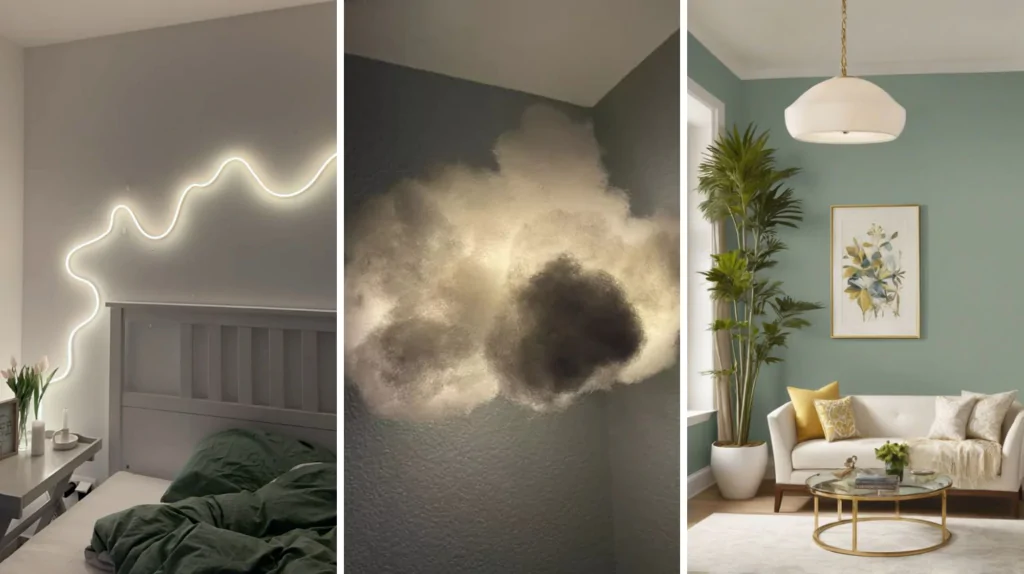
Living Room Lighting: Some General Advice
Few things in the interior of your home, apartment, or office affect your everyday mood and comfort as much as pleasing to the eye, bright enough, and appropriate lighting.
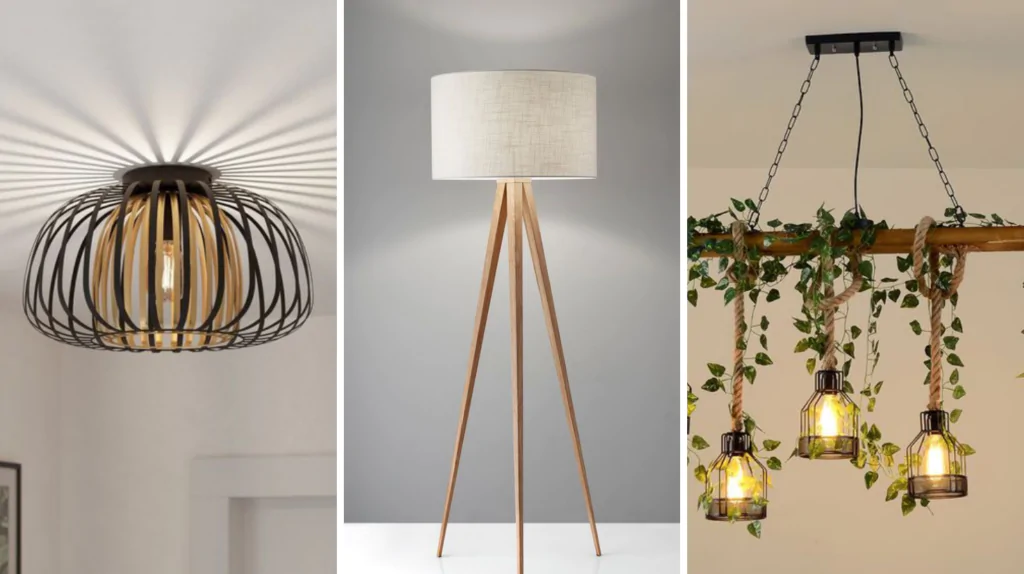
Lighting fixtures, adequately chosen according to your aesthetic taste and correctly installed in the right places in the living room, can create a lovely, cozy, warm, or vibrant atmosphere. Uncomfortable lamps installed chaotically or haphazardly and too dim or bright lighting can ruin even the most fashionable interior.
Lighting is used not only so that our eyes can see a person we are talking to but also so we can comfortably read or do other household chores. Ambient lighting provides overall illumination, ensuring the space is well-lit and functional. Accent lighting, on the other hand, highlights architectural features, creates drama, and alters the atmosphere, adding layers of depth and interest to the living room.
Any area in your home, including the bedroom, kitchen, and, of course, the living room, should be comfortable for doing any of your activities, such as chatting with friends, reading, watching TV, or using a laptop. Task lighting ensures adequate illumination for any activity. Whatever you do – from watching a game while lying on the sofa to having a pleasant conversation with guests.
Lighting helps zone areas within spacious rooms, creating distinct areas for different activities. This is especially true for small apartments, where it is impossible to divide the room using walls or large furniture.
Several Popular Types of Lighting
One key advantage of DIY projects is the ability to design and install lighting without using standard and template solutions, achieving one hundred percent compliance with personal ideas about comfort, aesthetics, and design trends.
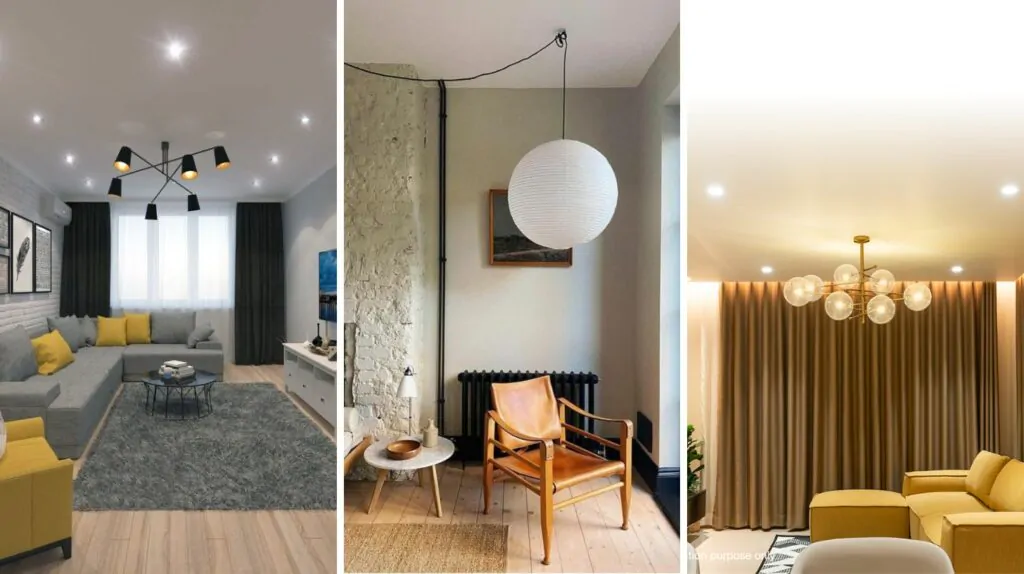
However, before you start your DIY lighting project, you need to remember the basics – not all lamps will suit your interior. If apartment and house owners were offered only a few functional solutions twenty years ago, now the range of solutions available, including for DIY projects, is much more comprehensive. Let’s start with the basics – lamp types.
On the floor

These vertical lamps usually stand on the floor (less often on shelves and niches) and can be relocated near the next socket as needed.
Classic and arched floors are usually not powerful enough to illuminate an entire area but bright enough to light half or part of a living room. An arched floor lamp can be a stylish and space-saving option for living room lighting, providing ample light and maximizing design impact.
On the ceiling

Ceiling-mounted lighting solutions, such as chandeliers, recessed lights, and an overhead light, can provide ambient lighting that sets the room’s overall mood.
Stationary overhead lights or their more sophisticated and artsy analog – chandeliers – are lighting objects that hang overhead and illuminate the entire area or almost the whole living room.
These solutions are believed to provide widespread illumination, ensuring no dark or poorly lit corners in the room. Chandeliers, in particular, are generally perceived not just as a source of light but as a separate decorative interior element, accent, or fitting into the room’s overall design.
On the wall
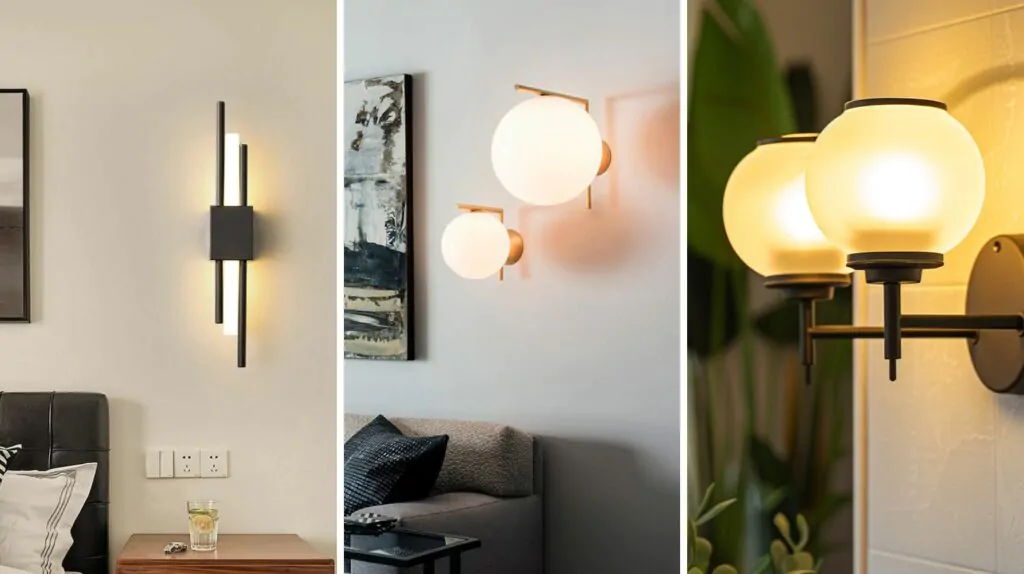
These light sources are also known as wall sconces. Unlike the previous two categories, these lamps (as their name implies) are mounted on walls and can serve various lighting purposes, from ambient light to accent lights.
Wall lights are a versatile option for creating ambiance and highlighting features in your living room. They save valuable floor or table space, making the room feel cozy without clutter. They can help fill areas where ceiling lights are not fully illuminated. Such lamps are usually installed in places where you read, work with papers, or use a laptop. Their primary function is not to illuminate the entire room but to highlight decorative accents, furniture, paintings, or interior items, creating a cozy, relaxed, or romantic atmosphere.
Spotlights and task lighting
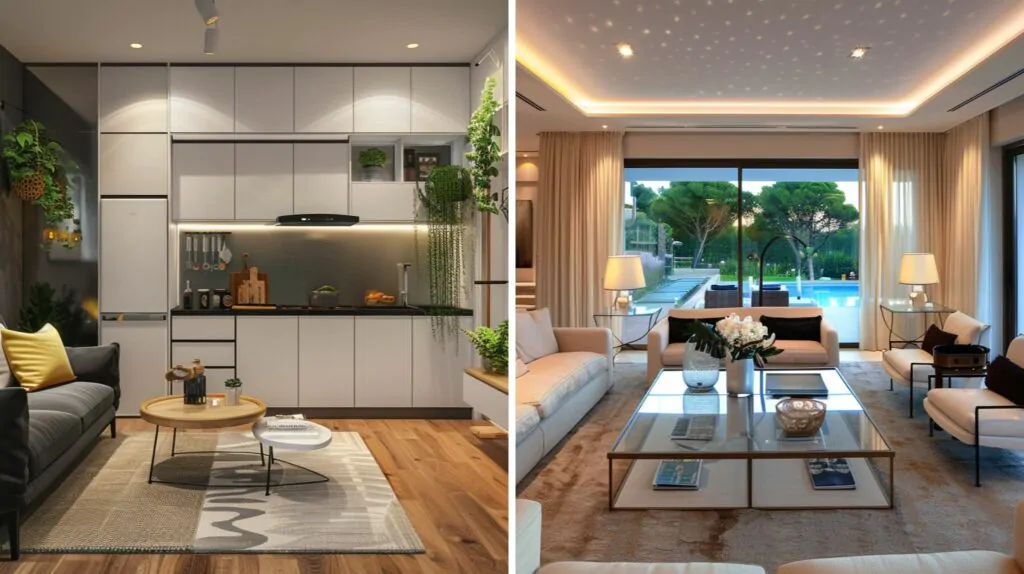
Spotlights (movable or recessed lighting) are an absolute must-have for those who need targeted illumination or extra light of a particular or small area in the room in their interior. They are designed to highlight specific features or zones or to produce focused light for activities like hobbies, writing or reading, working, playing chess, or crafting. Typically, this type of lighting is not used independently but only in combination with other lighting devices, including wall, table, or ceiling lamps. Table lamps could be used as a spotlight as well.
LED strips
Finally, we should not ignore trendy LED strips, flexible circuits embedded with LEDs that can be attached to various surfaces, providing both functional and exclusively decorative effects.
These modern lighting solutions, known as LED strip lighting, became in demand several decades ago. They are usually used to create soft, indirect light, enhance the room’s ambiance, highlight interior features like shelves, coffered ceilings, and console undersides, or are installed under cabinets or along workspaces for direct illumination.
Now that you know the basic types of lighting fixtures available on the US market, you can move on to DIY living room lighting ideas.
TOP-10 DIY Lighting Ideas for the Living Room
The advantage of any DIY project is independence from the range of lighting fixtures and brands available in local or online stores and, more importantly, unlimited creativity. You can use almost any material to create decorative shades and lampshades, from tiles and glass to bottles and even bones.
You can also use old standard lampshades or bottles and paint them with stained-glass-type paints. You can improve a standard lamp by adding some unusual decorative items. Make some DIY lighting with your kids or loved ones to experience a cohesive feel and create something one-of-a-kind.
Here are only several trendy or time-tested ideas.
1. Mason Jar Lanterns
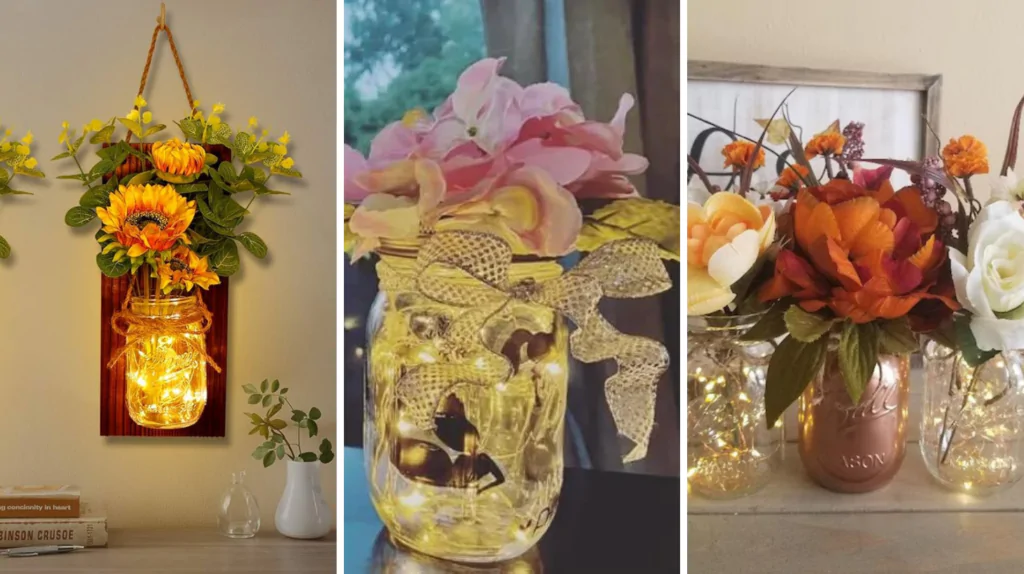
To install this decorative lighting, you should collect several mason jars, LED fairy lights, tea lights, and twine.
- Clean and dry the mason jars.
- Place LED fairy lights or tea lights inside the jars.
- Secure the lids and wrap twine around the top for a rustic look.
- Arrange them on shelves or side tables, or hang them with twine for a charming, warm glow.
2. Light with Rope
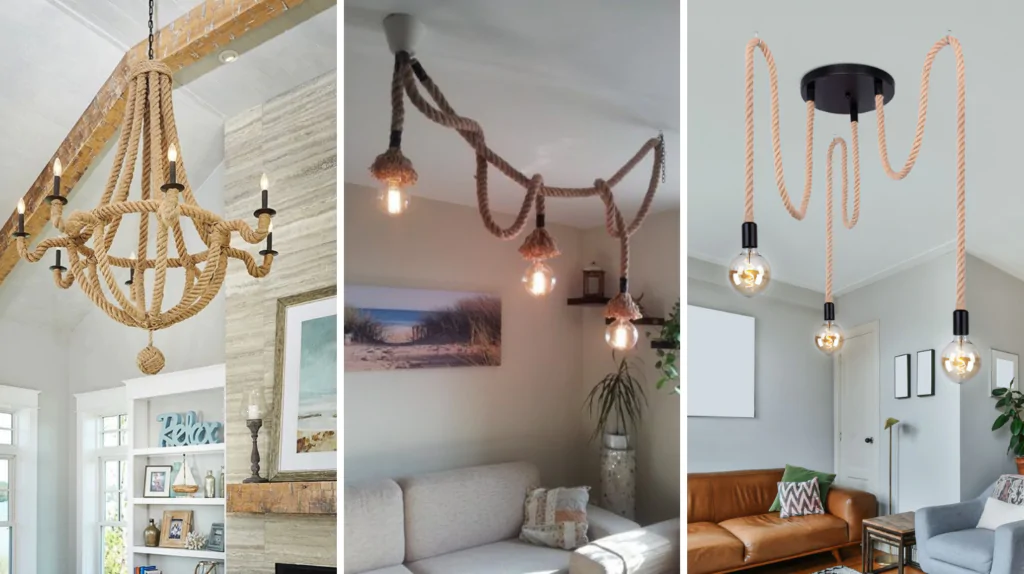
For this lighting project, you should prepare materials that can be found practically in every garage: a pendant light kit and thick rope.
- Take a basic pendant light kit and wrap the thick rope around the cord.
- Secure the rope with hot glue at intervals.
- At the final stage, all that remains is to hang the light from the ceiling for a nautical or rustic aesthetic.
3. Living Room Lighting with Wine Bottles
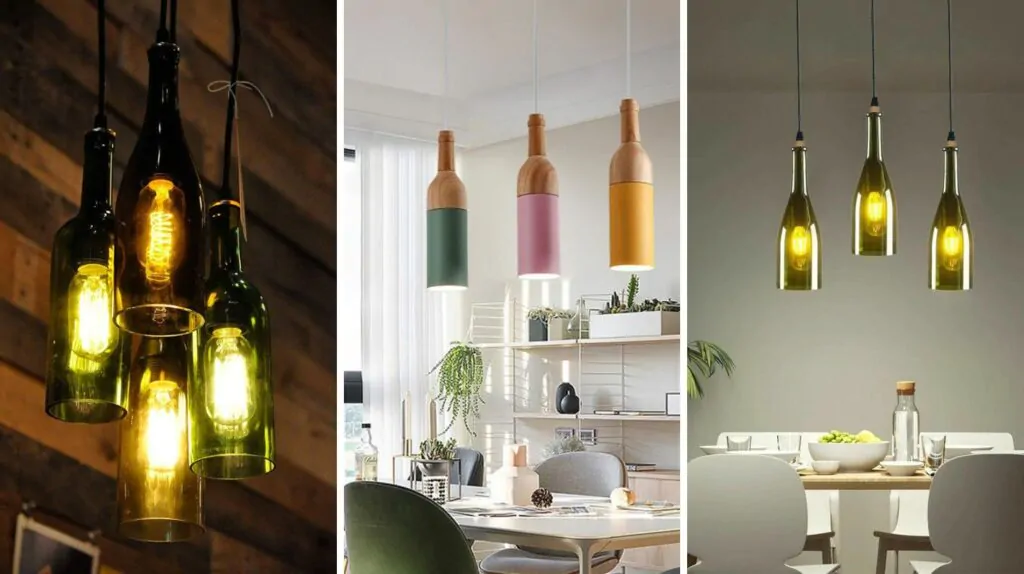
As in the previous case, this project can be done using materials found in almost any home: empty wine or milk glass bottles, chandelier frames, and LED string lights.
- Clean and remove labels from the wine bottles.
- Insert LED string lights into each bottle.
- Attach the bottles to the chandelier frame. Hide the chandelier above your coffee table or dining area for an elegant touch.
4. Driftwood Floor Lamp
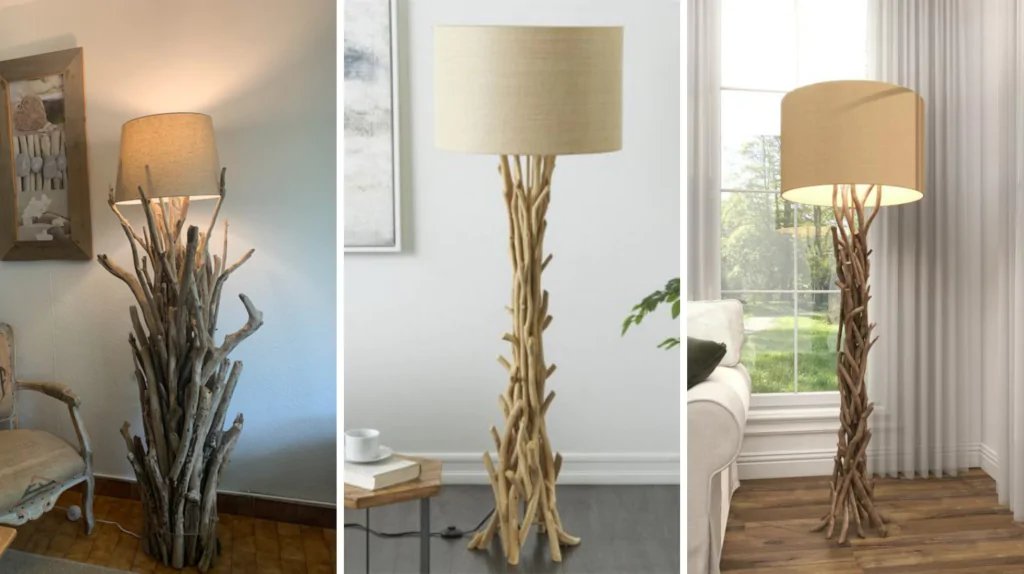
Unlike past DIY lighting projects, this one requires some carpentry skills. You will need a large piece of driftwood, a floor lamp kit, and a sturdy base.
- Find a large, exciting piece of driftwood.
- Secure the driftwood to a sturdy base using screws or brackets.
- Thread the floor lamp kit through the driftwood.
- Add a lampshade to complete the look, and place it in a cozy corner of your living room.
5. Living Room Lighting with Hula Hoop
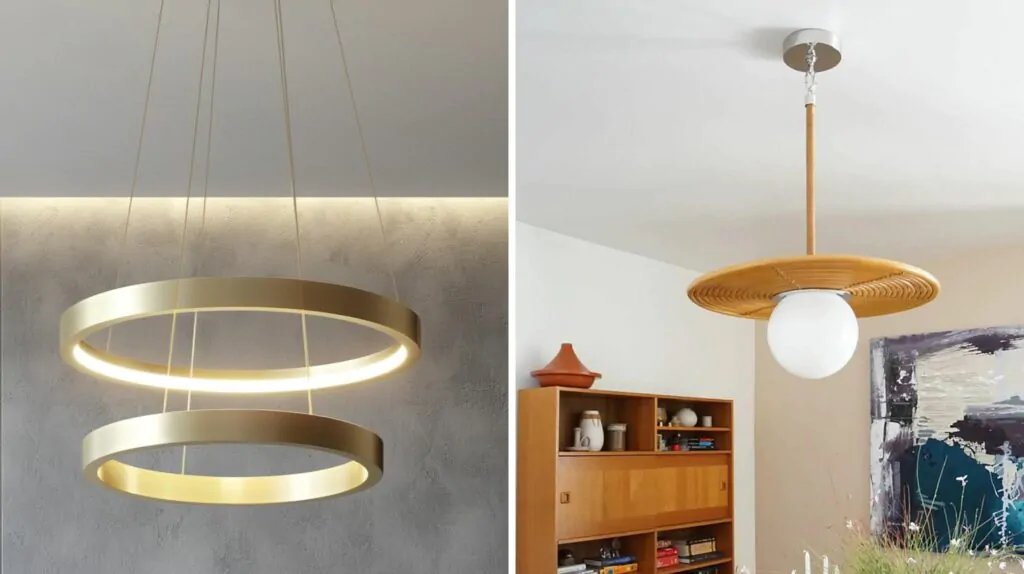
This is another living room lamp idea for those who are looking for low-cost and unusual solutions. You will need a hula hoop, LED string lights, and ribbon.
- Wrap LED string lights around a hula hoop.
- Secure the lights with ribbon or zip ties.
- Hang the hula hoop from the ceiling using more ribbon or fishing wire for a whimsical, fairy-light effect.
6. Industrial Pipe Lamp
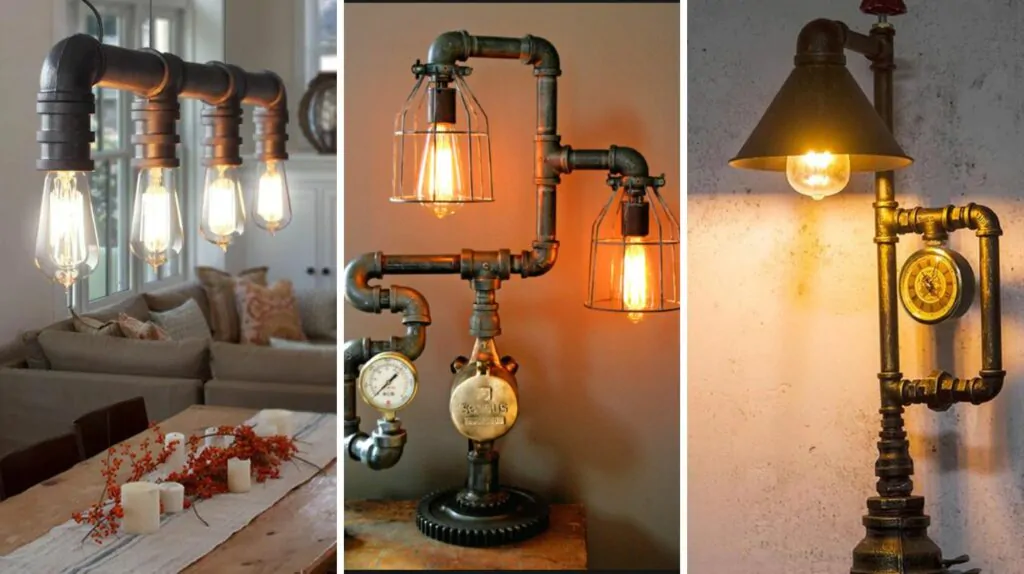
This DIY lighting option requires special skills and tools, but it’s worth it. You will also need metal pipes and fittings, a lamp kit, and an Edison bulb.
- Assemble metal pipes and fittings to create a lamp base and stand.
- Attach a lamp kit to the assembled structure.
- Screw in an Edison bulb for an industrial-chic look.
- Place the lamp on a side or console table for a stylish accent.
7. Paper Lantern Cluster
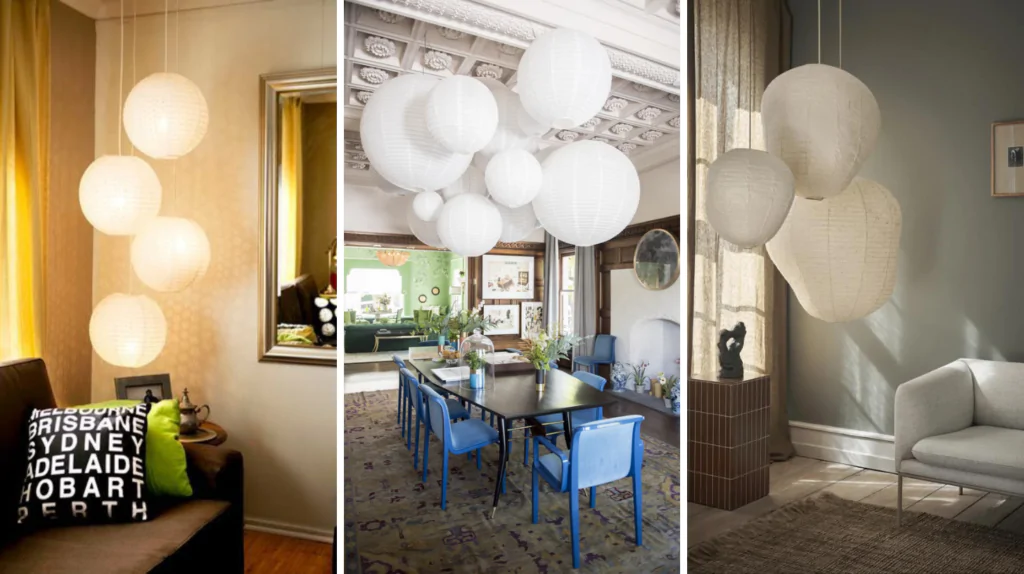
Here is another relatively simple solution for DIY tasks. Various sizes of paper lanterns, pendant light kits, paint, or markers.
Be aware that some bulbs can become hot and burn paper or fabric lamps. These projects require the use of special “cool” LED bulbs!
- Paint paper lanterns.
- Insert pendant light kits into the lanterns.
- Hang the lanterns at varying heights to create a clustered effect.
- This adds a playful and artistic touch to your entire house or flat.
8. Living Room Lighting with Book Page Lampshade
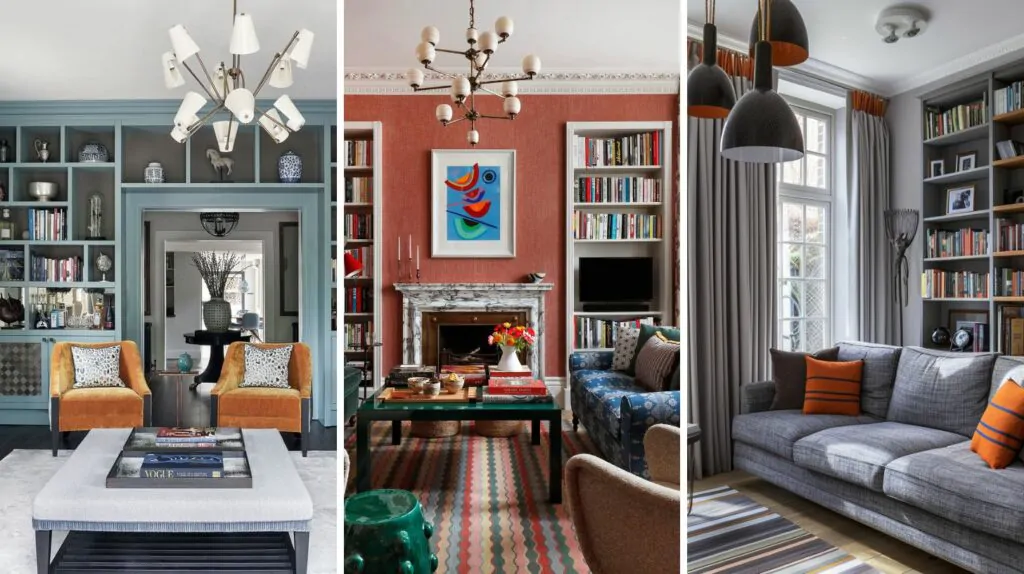
Materials for this project are available in any household – old book pages, lampshades, glue, and clear sealant.
- Tear out pages from an old book or print out your favorite text.
- Glue the pages onto an existing lampshade, overlapping them slightly.
- Apply a clear sealant to protect the pages.
- Attach the shade to a lamp base for a literary-inspired lighting fixture.
9. Branch Living Room Lamp Ideas
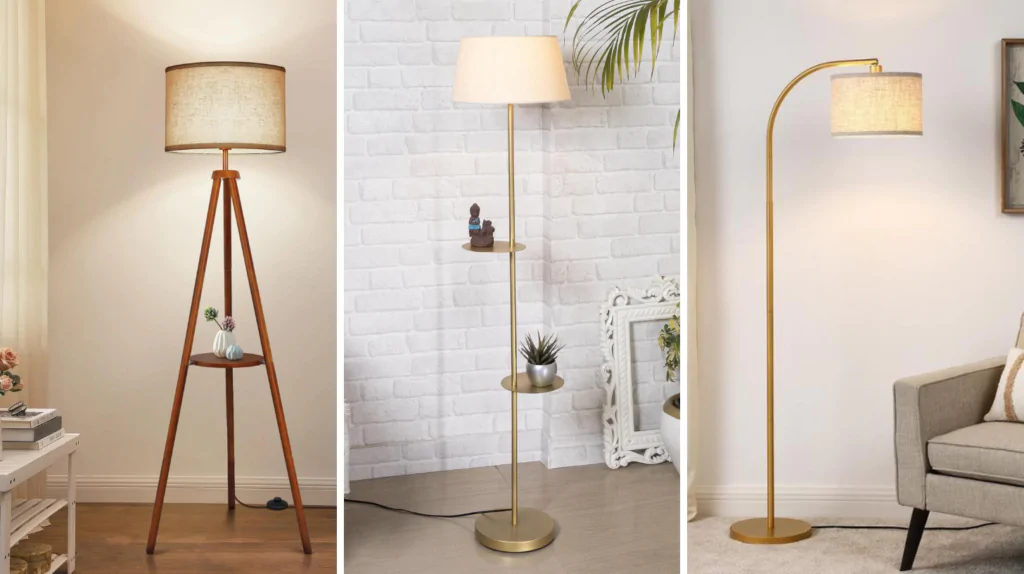
Unlike the previous project, this lighting solution will require design thinking and carpentry skills, sturdy tree branches, pendant light kits, hooks, and chains.
- Find a sturdy, visually attractive, unordinary, or tree branch you like the most.
- Attach pendant light kits along the branch at various points.
- Use hooks and chains to hang the branch from the ceiling.
- This nature-inspired chandelier adds a rustic and unique element to your living room.
10. Living Room Lighting with Fabric-Wrapped Cord Lights
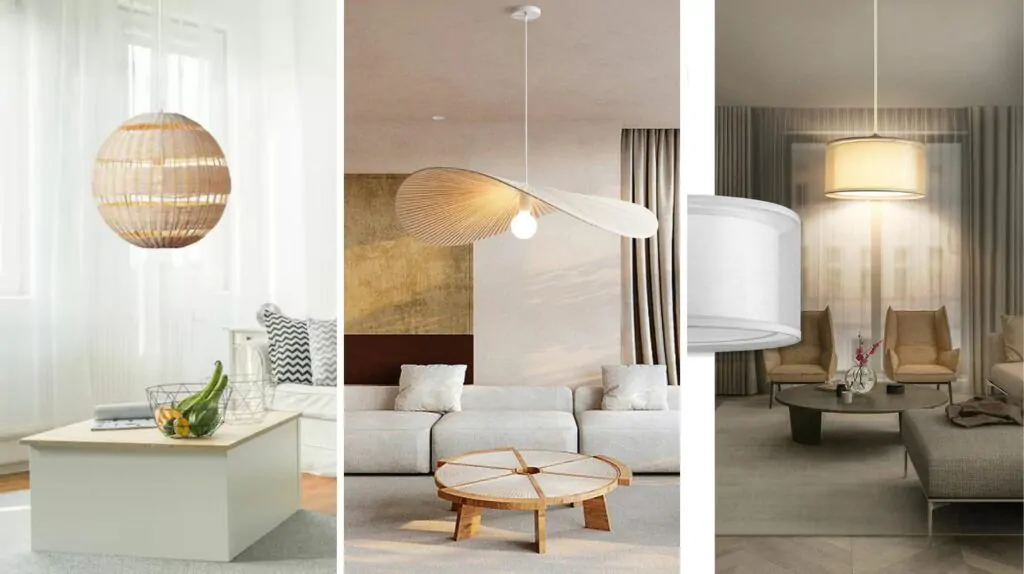
Even though similar wires are already sold ready-made in construction and lighting stores, you can decorate them and then use them to mount any lamps or fixtures. You will need a pendant light kit, fabric strips, and a hot glue gun.
- Cut fabric strips in your desired color or pattern.
- Wrap the fabric strips around the cord of the pendant light kit, securing it with hot glue.
- Hang it.
11. Custom Table Lamp
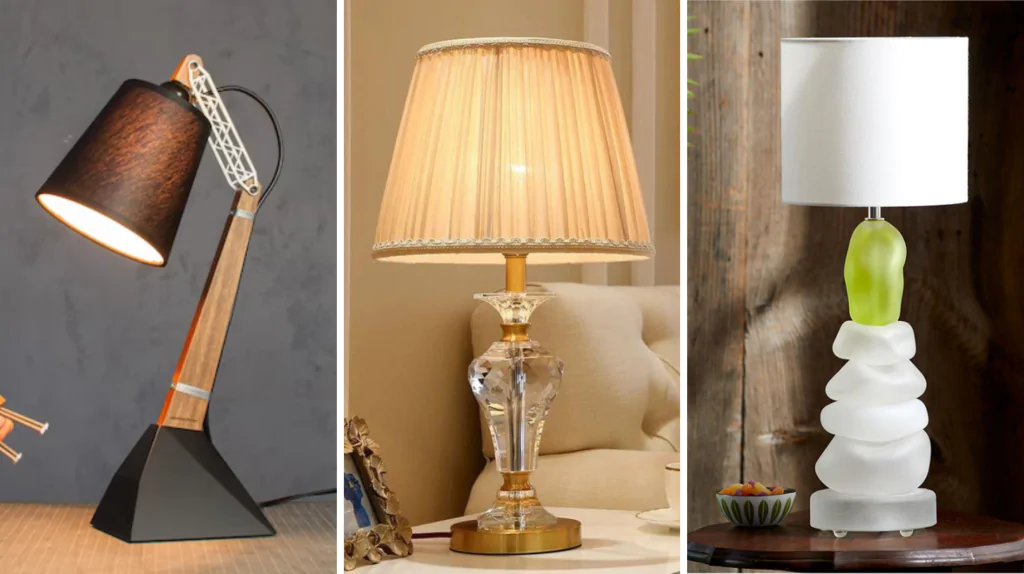
This DIY project involves creating a custom table lamp using materials such as old books, decorative paper, or fabric.
- Gather old books, decorative paper, or fabric.
- Stack the books to the desired height and secure them with glue.
- Drill a hole through the center of the stack for the lamp rod.
- Insert the lamp rod and attach a lampshade.
- Decorate the lampshade with decorative paper or fabric to match your room’s design.
While looking for well-lit living room light fixture ideas, remember that DIY solutions can be unique but require your participation, effort, and time. On the other hand, the result can be excellent and stylish, fitting into the interior ideally. You can create many DIY lights with your children, making something together and having an unforgettable experience with your family.
DIY Living Room Lighting Ideas and Solutions to Keep in Mind
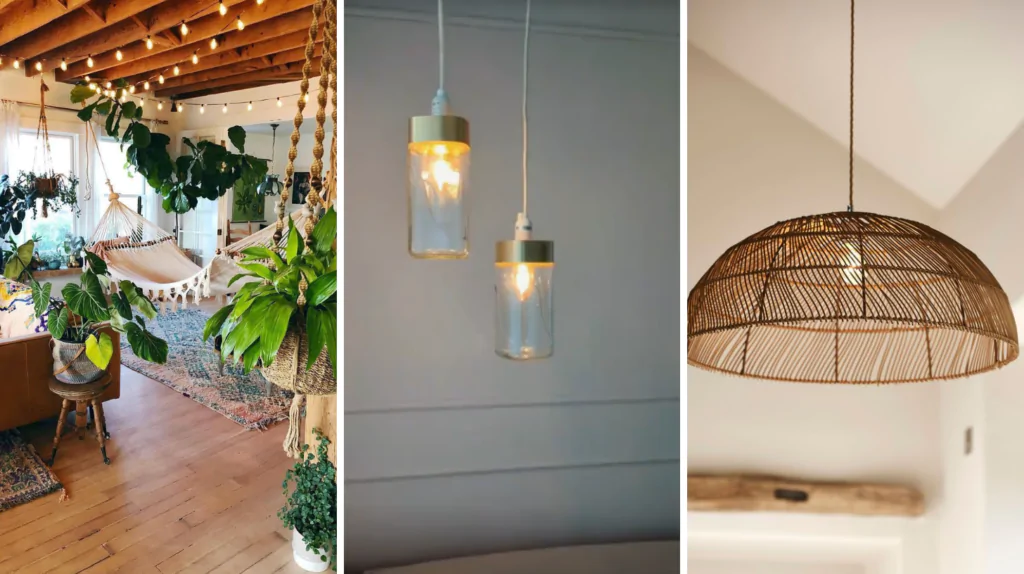
1. Be Smart
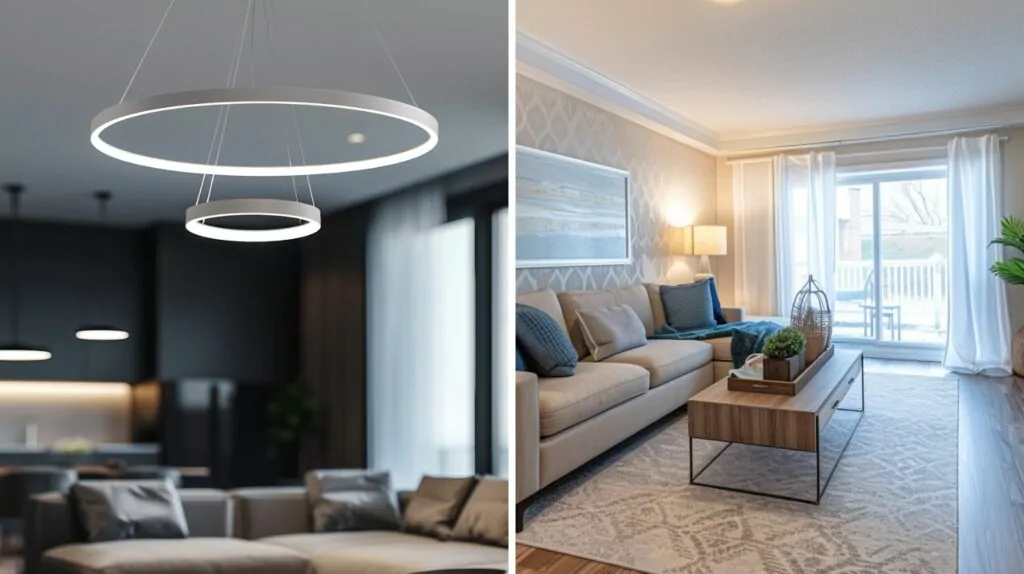
Integrate smart bulbs and modern remote-controlled switches that can be controlled via apps or voice assistants. These systems offer customizable lighting scenes and programmed schedules.
2. LED Strips
Among living room light fixtures ideas, you should Install LED strips under shelves, behind TVs, or other interior elements to create indirect lighting that adds depth and dimension to the room.
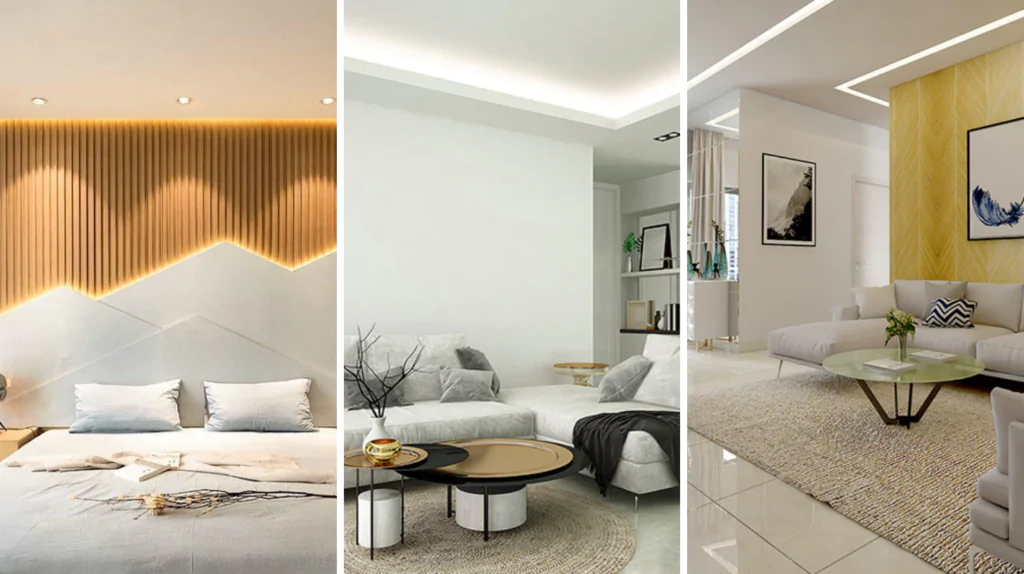
3. Geometric Light Fixtures

Incorporate fixtures with geometric shapes for a modern, artistic touch. These can serve as both functional lighting and sculptural elements.
4. Sustainability

Opt for fixtures made from bamboo, rattan, or recycled materials to add a touch of eco-friendliness and warmth to any apartment or even office.
5. Vintage and Industrial Styles
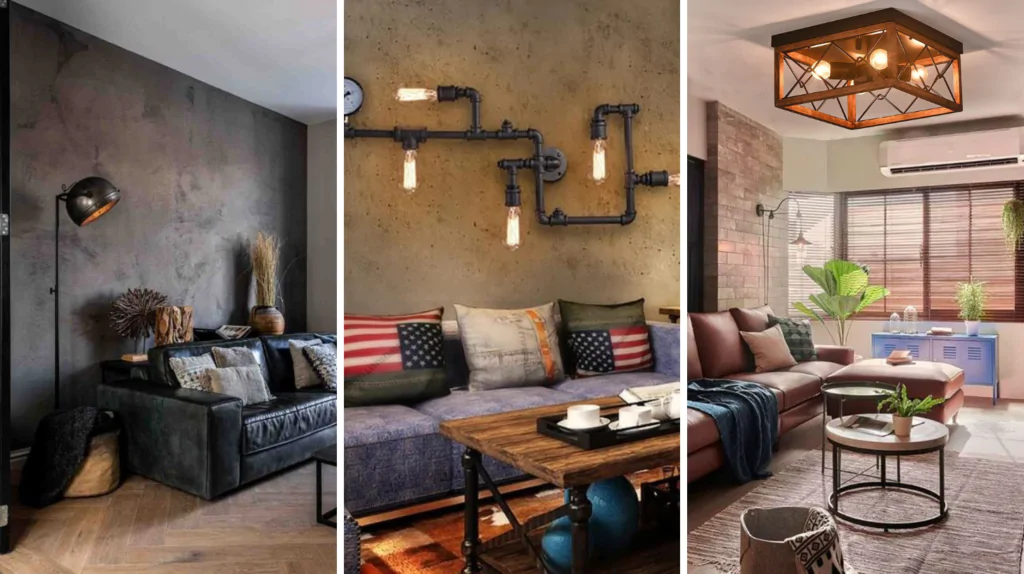
Vintage Edison bulbs and industrial-style fixtures with exposed wiring and metal elements are currently popular, adding a blend of nostalgia and modernity to living spaces.
6. Floor Lamps and Sockets
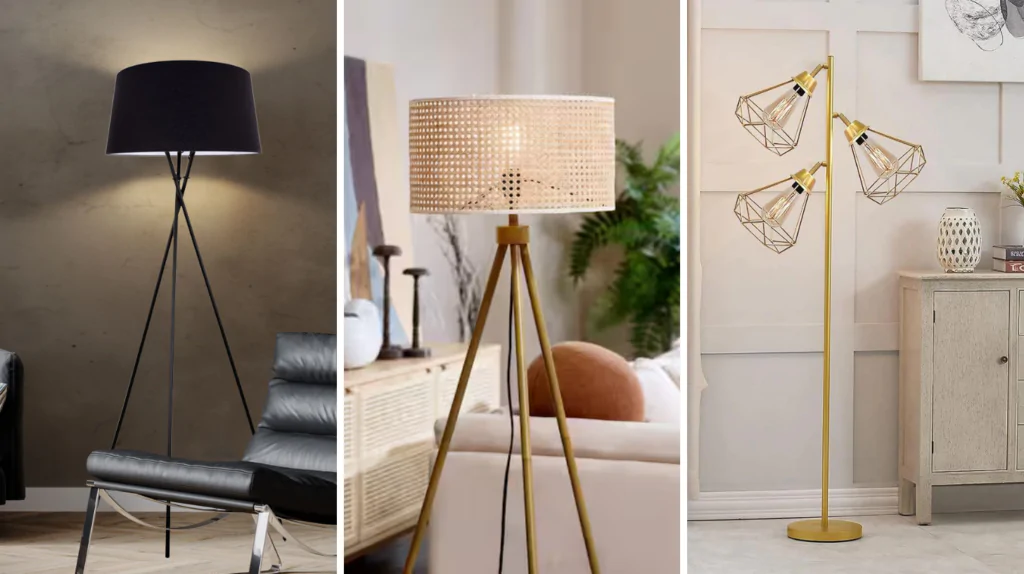
Some fixtures, like floor lamps, connect to sockets rather than to wiring directly, so you should consider the location of the sockets in your home in advance or design the location with the lighting project in mind.
Practical and Design Tips
Creating your living room’s individual and perfect-fit lighting setup involves careful planning, selecting the right fixtures, and ensuring safe installation. We offer practical and design tips for DIY living room lighting, including safety considerations, reliable lamp fastening, energy-efficient lamps, and other essential advice.
Safety First
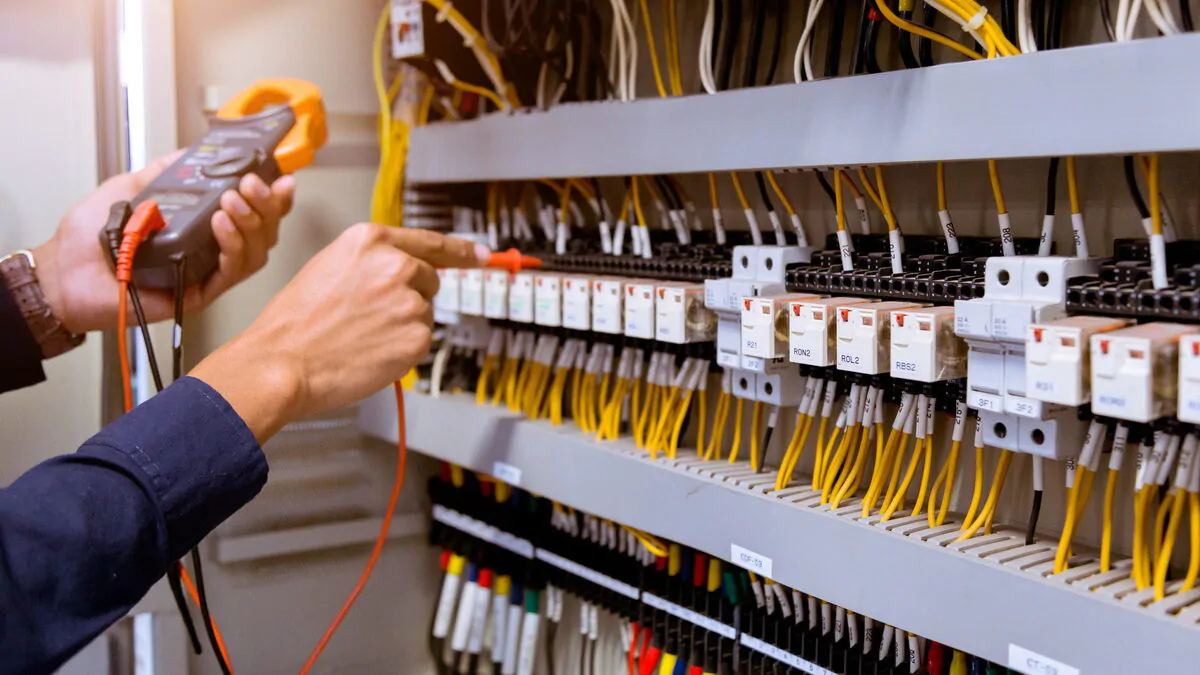
Know your limits. While DIY projects can be fulfilling, it’s crucial to recognize your limits regarding any work potentially dangerous to your life and property. We are talking about electricity works. If you’re not 100% confident in handling electrical wiring or installation, it’s best to call a local professional.
Turn off the power! Even if you are an experienced electrician, never work on electrical appliances or wiring while they are live. Always turn off the power at the circuit breaker before touching any wires, light bulb sockets, or anything connected to the electricity. Check and double-check it! Use a voltage tester to confirm the power is off before working with any electrical appliances or wiring. Warn your family so that no one accidentally turns on the electricity while you are working on the lights.
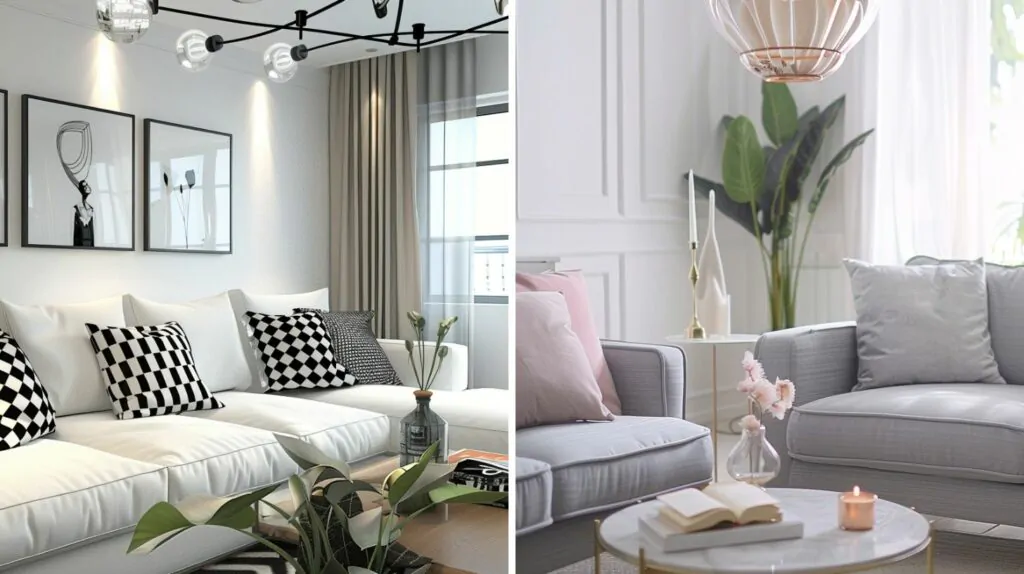
Ensure that all electrical work complies not only with local building codes and regulations but also with the recommendations of lighting manufacturers. This helps maintain safety and avoids potential legal issues.
Reliable Fastening of Lamps
Use brand tools and materials. It can be costly, but investing in quality tools and materials is better. Using the right tools makes the job easier and ensures the safe operation and durability of lighting fixtures.
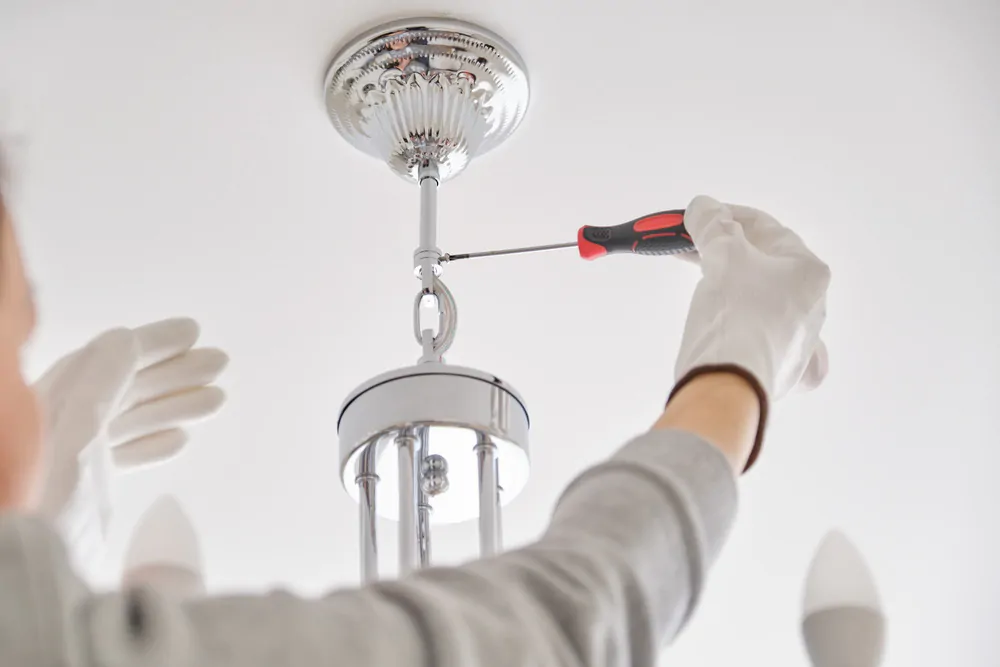
Secure mounting is a rule. Ensure that all lighting fixtures are securely mounted. Use appropriate anchors and screws for your wall or ceiling type. For heavy fixtures weighing more than half a pound, ensure the mounting points can support the weight.
Always follow the manufacturer’s installation instructions when working with bulbs and wires. Improper installation can lead to safety hazards and reduce the fixture’s lifespan.

Check stability one more time. After you have completed the installation, it would be a good idea to double-check that all elements are securely fastened and the wires are insulated. Please shake it gently to ensure lamps and fixtures are securely fastened and won’t wobble or fall.
Energy-Efficient Solutions
LED bulbs are the choice for those considering the rational use of resources and saving on electricity bills. Depending on the type of LED lamp, it can consume 30-80% less electricity than traditional options, and the service life of such lamps is much longer than that of incandescent lamps.

Choose the proper lumens. Lumens measure a bulb’s brightness. For living rooms (children’s rooms and kitchens), consider using bulbs that provide around 1,500-3,000 lumens. Considering the room’s area, this indicator was selected since a too bright light is not always the best solution.
LED bulbs come in various so-called color temperatures (usually measured in Kelvins (K). For a cozy living room atmosphere (if you don’t read books in the living room), opt for warm white (2700K-3000K). Choose cool white for a brighter, more modern look and activities in the room (3500K-4100K).
Select dimmable LED bulbs if you want to periodically change the lighting intensity, adjusting the room’s interior to your mood or type of activity.
Practical and Design Tips

Layer Your Lighting

One of the core benefits of DIY projects is the unlimited creativity available. Do not limit yourself to only LED strips or chandeliers, floor lamps or wall sconces. Try using several types of lighting at once. Design lighting to use different solutions, such as ceiling, floor, wall, spot, and LED strips.
Use Dimmers

Modern lighting devices have not only two states – on and off. By installing special dimmers, you can customize the lighting. This saves energy, extends the life of your bulbs, and provides customizable lighting. Not all fixtures and bulbs (even modern ones) are compatible with dimmers.
Positioning Matters
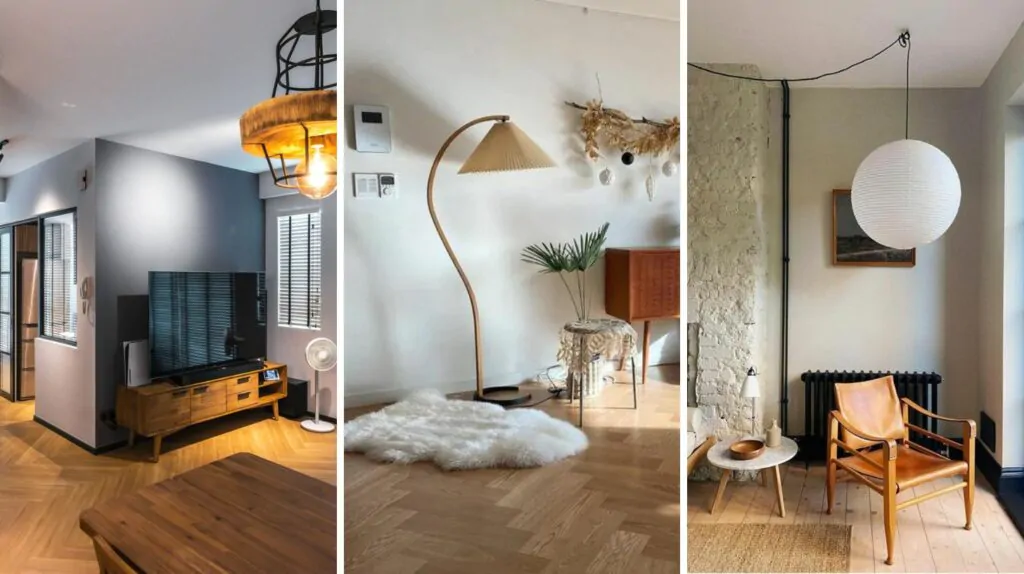
Lighting fixtures, regardless of their type and model, are not installed randomly on the walls and ceiling of the living room. Avoid placing lights where they cause glare on screens or in the eyes. Use wall-mounted lights or floor lamps to illuminate reading nooks or hobby areas without casting shadows.
Reflective Surfaces
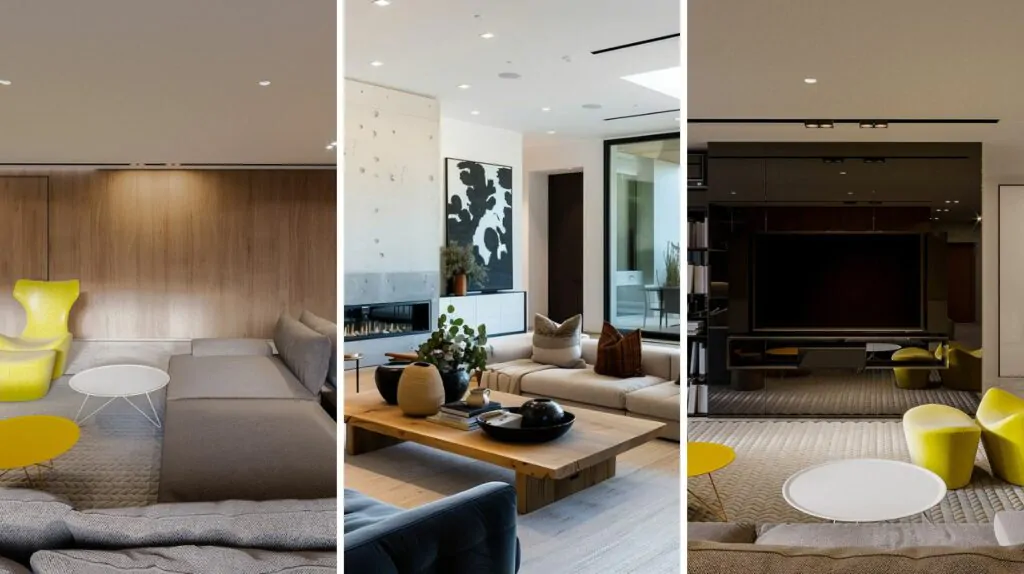
Utilize reflective surfaces like mirrors and glossy finishes to enhance light distribution. This lighting option is suitable for small spaces since mirrored and bright surfaces, if installed correctly, can expand the space visually.
Match Fixtures to Decor
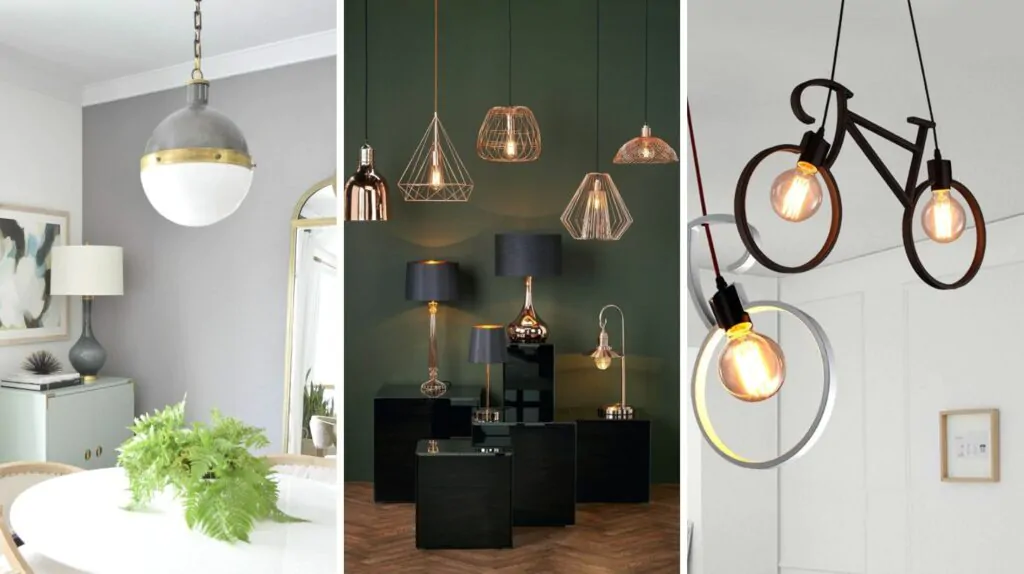
Lighting fixtures (modern, high-tech, retro, rustic, DIY, and any other) should fit perfectly into the chosen interior design and style. Modern lamps made of metal and glass are unlikely to look appropriate in a classic or rustic interior, and retro and vintage lamps will not fit into contemporary and high-tech designs.
Incorporated Natural Light
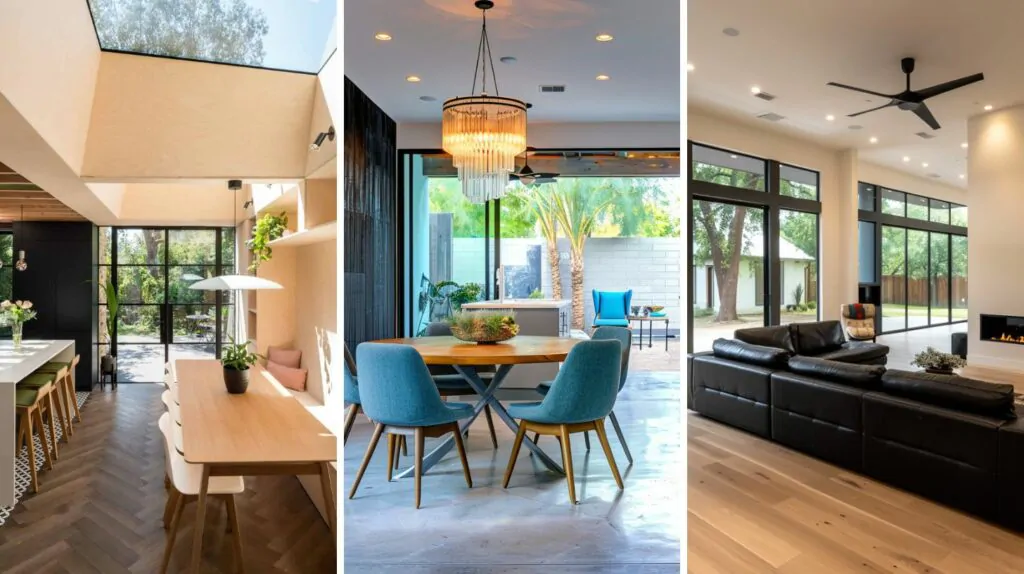
While lighting is an important design aspect, don’t avoid natural lighting. If your living room has large windows, you can always enjoy sunlight. Moreover, the sunshine will delight you on summer days until late at night.
Conclusion
Lighting is not just a benefit of modern civilization. This is an important design and practical aspect in residential premises. A set of correctly selected lamps, ceiling lights, chandeliers, several matching table lamps, and even LED strips can both advantageously highlight your taste and take comfort to a new level or turn the room into something dark and uncomfortable.
Keep in mind that working with lighting and electricity can be deadly. Always follow safety precautions, know your limits, and contact qualified electricians if necessary, at least at the stage of installing and connecting electrical lighting devices.
However, you don’t always need to buy expensive lighting fixtures and order design projects to create one-of-a-kind, comfortable, and aesthetically pleasing lighting. Many trending solutions can be made and installed DIY, even if you don’t have any experience or skills. All you need is a little creativity, a simple set of materials, basic home repair skills, and compliance with safety regulations.
